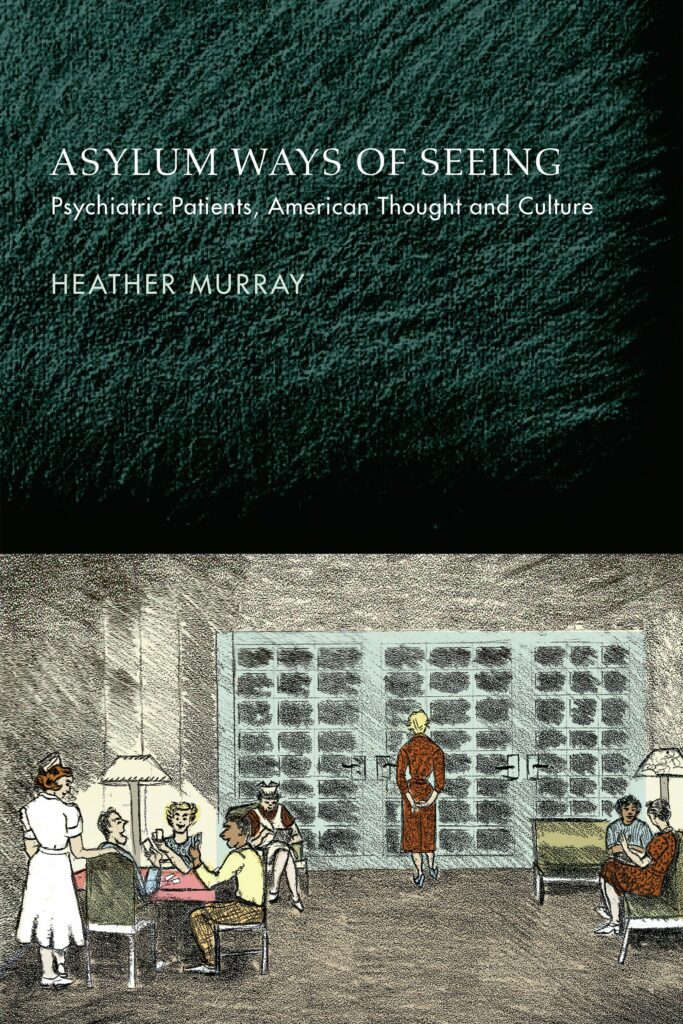Today’s post comes from Penn Press’s Marketing Operations Manager, Tracy Kellmer, continuing a blog series in which Tracy will explore one of the books currently for 75% off in the Franklin’s Faves section of our website!
One of the perks of working at a university press, and especially Penn Press, is that I am exposed to excellent scholarly treatments of a wide variety of subjects. As a member of the Marketing department, I get to know a bit about every book we publish through my engagement with its metadata, such as keywords and subject codes, and its descriptive copy, which appears in everything from seasonal catalogs to online retail sites (we know the one you’re thinking of). But a marketer has short-lived romances with books on the front list: every six months I have a new season’s worth of books to get to know and a new seasonal catalog to publish. That’s why I love Franklin’s Faves! I get a chance to rediscover a book that intrigued me the first time around. I hope you enjoy my rediscoveries as much as I do!
What I picked:
Asylum Ways of Seeing: Psychiatric Patients, American Thought and Culture by Heather Murray
Why I picked it:
Like many others, my first exposure to representations of the lobotomy was the movie One Flew Over the Cuckoo’s Nest and of electroconvulsive therapy (ECT) was the book Zen and the Art of Motorcycle Maintenance, both of which were intended to horrify. While in graduate school in Binghamton, I incorporated into my personal history of the city the stories I overheard about the closing of the mental hospital “up on the hill” in the 1970s and how the influx of “crazies” caused the “downtown” to deteriorate. Even now I can’t avoid the number of cultural entertainments being produced and advertised in which the “insane asylum” and its potential for salacious stories and paranormal legacies loom large. I wanted to read this book because it promised a fair and balanced depiction, based on historical research and methods, of the mental hospital—and its patients and practices—over the course of the twentieth century.
What I discovered:
It’s kind of an obvious observation that the history of the mental asylum mirrored the history of the wider American culture of which it was a part, and it’s not surprising that what happened in mental hospitals both impacted and was impacted by larger trends in medicine, family and gender dynamics, and politics. But I think the value in reading a book like Heather Murray’s is that it combines sources from both inside and outside the asylum to trace how, exactly, the evolution of the mental hospital progressed to what it is—and is not—today. And by doing so, it enables me to envision other possibilities for the future.
The book begins in the late-nineteenth and early-twentieth centuries, with the perception of the mental hospital as a place of respite from the outside world based on patient testimonials, letters from family members, and doctors’ records. Mental illness was viewed as something that had to be endured. People who were too mentally ill to function in society accepted their fate of living out their lives in a mental asylum as one more thing beyond their control, as was much of everything else. The image of a patient in a hospital, doing nothing, staring out the window, was viewed positively: as a manifestation of a troubled and suffering person finally achieving peace.
But over the first half of the twentieth century this perception changed. The scale of both World Wars, and the rapid development of technological and medical sciences they entailed in their conduct and aftermath, led to the “biologization” of mental illness. Mental illness was no longer a fate to which one succumbed, but a disease of the brain that could be cured by science. Treatments such as lobotomies and ECT that targeted the physical brain and nervous system promised to cure those with mental illness. Critics, both patients and practitioners, objected to how these procedures could turn people into “automatons”: unthinking people who lost memories and connections to the outside world. In addition, the political climate and culture at large viewed the malleability of the brain, as demonstrated by the lobotomy and ECT, as a liability to democracy. If people could be made to forget their own history, then could also be susceptible to brainwashing by the enemies of democracy, or at least open to fascist ideas.
In the second half of the twentieth century, the counterculture of the 60s promoted the flourishing of the whole individual—not just conceiving of a person as a thinking and reasoning public actor but also considering the internal and personal feelings and emotions that made a person who they were. This period also saw the development of powerful pharmaceuticals, especially Thorazine, which were prescribed in hospitals when lobotomies and ECT fell out of favor. But these drugs repeated the same result: the creation of unthinking, unfeeling, unresponsive, undifferentiated automatons, shuffling about hallways or staring at televisions. By the 70s and 80s, any benefits of the mental hospital became overshadowed by abuses and failures, real or perceived, that pervaded the many memoirs and testimonials of patients and staff. Instead of the ideally resigned patient being cared for by hospital doctors and staff at the end of the nineteenth century, by the end of the twentieth century, people with mental illness were idealized as whole individuals possessing enough personal agency to relieve their suffering through prescription management and outpatient services. As a result of this newly, widely accepted model of the mental patient, the inpatient institution was no longer needed, nor effective, and they were closed and replaced by community-based, outpatient services.
Which leads us to where we are now. Unfortunately, the funding for this utopian vision of a network of fully staffed, community-based, outpatient services never materialized; either the services weren’t staffed at a level to meet the needs of the community or patients could not access the services that were available. And inpatient services have become either inadequately short-term or accessible only by those with adequate means.
I discovered that with this hindsight, I wish that instead of closing problematic mental hospitals, that these inpatient institutions could have continued to exist, albeit in much improved conditions, side-by-side with community-based services. Perhaps then, people suffering with mental illnesses too severe for merely prescription management and outpatient services would have a place to go besides jail or the streets. And people who need a few months of disconnection from the outside world to focus on their mental health could get it, regardless of their means. And perhaps, then, too, an individual’s agency and right to flourish could be respected while at the same time the medical profession and the patient’s wider community could have a voice in their overall plan of care.
Favorite bit:
At the very end of the epilogue, Murray reflects on the fascination with abandoned asylums in popular culture—from horror movies to paranormal reality TV. She suggests that this obsession is not just about voyeurism, creepiness, morbid obsessions, ghosts, and so on, but also an unacknowledged mourning of a sense of solidarity and a bygone sensibility of care. And I agree with that. But I think these media also present an escape from our current reality in which we all are managed, monitored, and optimized for public consumption, either willingly or not, and offers an imaginary, alternative place in which we could be free of the constraints placed on our thoughts and feelings so that we appear sane enough to hold onto whatever sense of security we have worked so hard to achieve.


